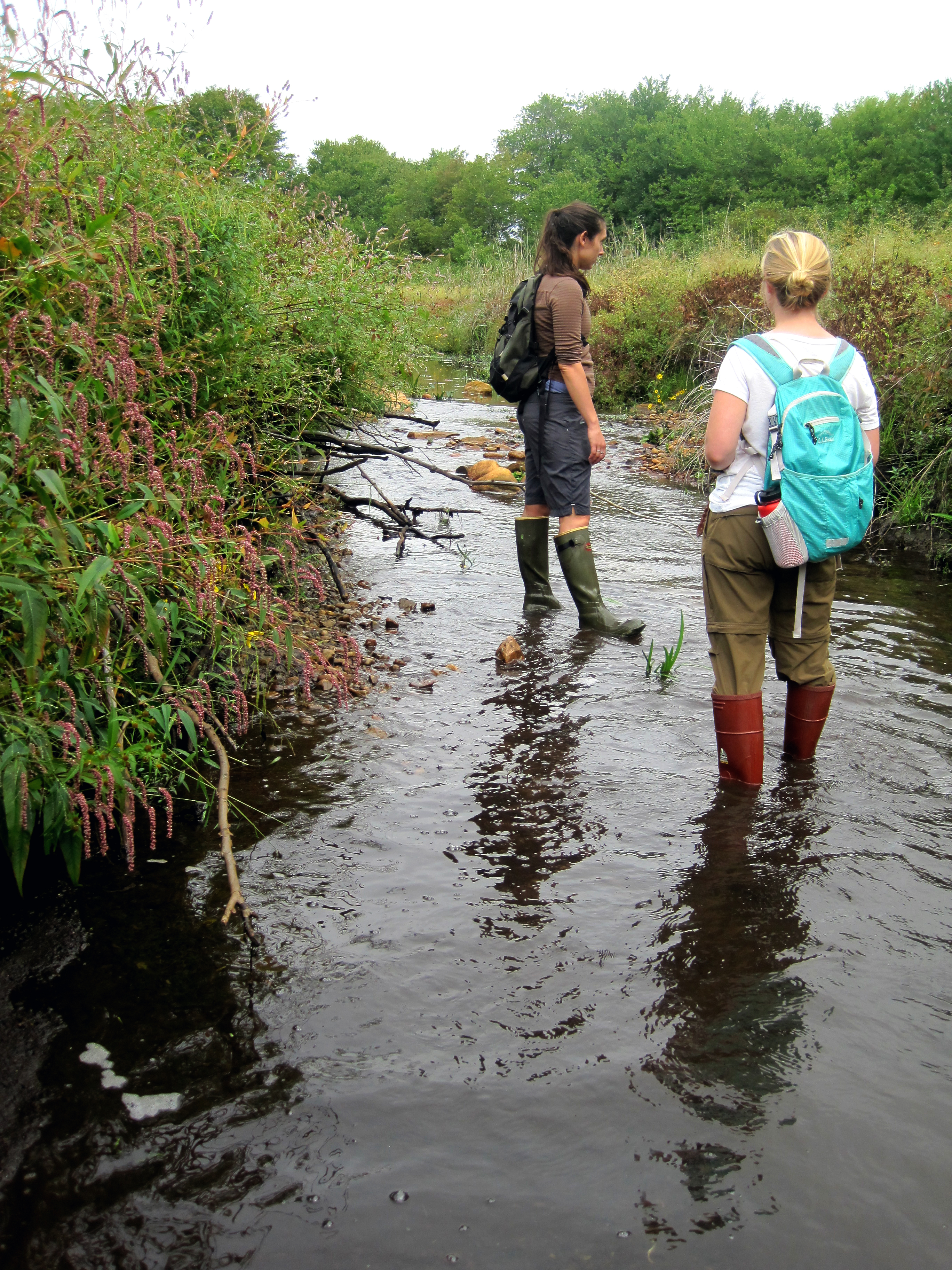This week’s Fridays in the Field post comes from Anna Marshall, Green Projects associate.

Last week, you heard from the Green Projects team about vegetation monitoring efforts at the Pond Lily dam removal site. This week, we are taking you an hour further northeast to learn about another monitoring effort occurring at the Hyde Pond dam removal site in Mystic, Connecticut. Today, the waters of Whitford Brook run free between plant-covered banks. But just one year ago, a five foot tall concrete and stone dam blocked the river at this site.
***
Every river has a story – a unique combination of history and physical features, referred to as geomorphic characteristics. For Whitford Brook, over 300 years of that story included a stagnant pond and impassable barrier for fish at the former Hyde Pond Dam. From the 1600s to the 1800s, Hyde Pond Dam powered two cotton mills: Mystic Manufacturing Company and Hyde Brothers. However, by the early 1900s, the mills were no longer in operation and the dam was left unmaintained. Over time, Hyde Pond filled with sediment and the dam fell into disrepair.
As with anything constructed, dams have a lifespan, and once they outlive it, they can pose risks to people and property downstream. It is estimated that over 75,000 dams across the country are nearing the end of their useful lifespan. In Connecticut, most of these structures are small dams, similar to Hyde Pond Dam, that date back to the colonial era. Others are products of the 1950s and 1960s, a time during which it was estimated that a river was dammed every 6 minutes in the U.S. Before Save the Sound removed the Hyde Pond Dam in November 2015, predicting the response of the river to dam removal was a critical part of the process of successfully restoring Whitford Brook.
The design for the Whitford Brook restoration followed an approach unique to dam removal in Connecticut: natural channel evolution. Rather than forcing the newly free-flowing stream into an engineered channel, construction activities at the site were limited to the area and stream channel adjacent to the dam. This hands-off approach limits disturbance within the natural system, conserving important soil and floodplain properties. As the channel carves its way through former pond sediments, the river adjusts, ultimately shaping and creating the new ecosystem.

The removal of Hyde Pond Dam offered a prime opportunity for testing natural channel design. Since the site is not located in a highly urbanized or built environment, there is space for the river to undergo natural channel evolution without impact to critical infrastructure.
Unfazed by angry bees, giant spiders, snow, and deceptively deep stream conditions, Green Projects staff has been documenting physical, ecological, and chemical characteristics in Whitford Brook post-dam removal. The data collected will allow us to predict how other channels and ecosystems will respond to passive dam removal. So far, the recovery of Whitford Brook has matched what we expected to see: multiple channels winding through the floodplain as the river continues to adjust.
We’ll keep an eye on Whitford Brook as its story continues to unfold. Stay tuned for updates!
